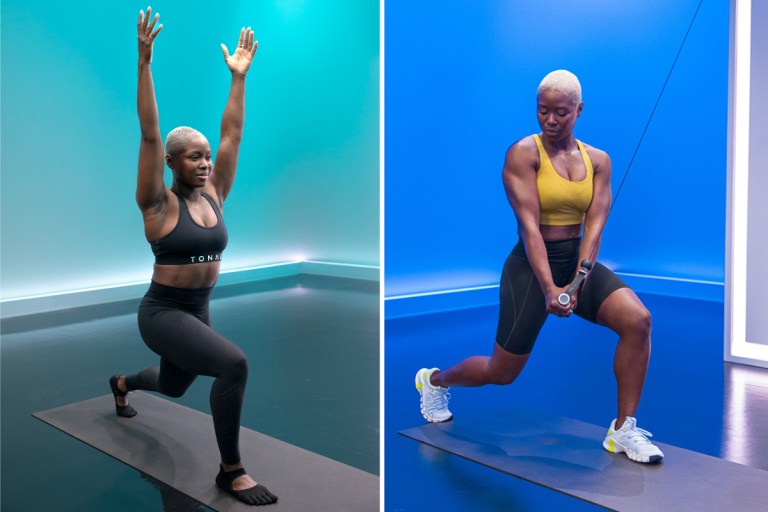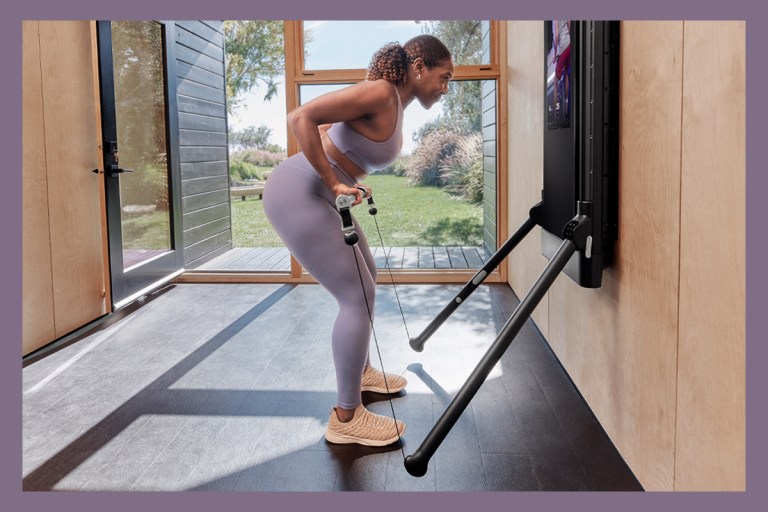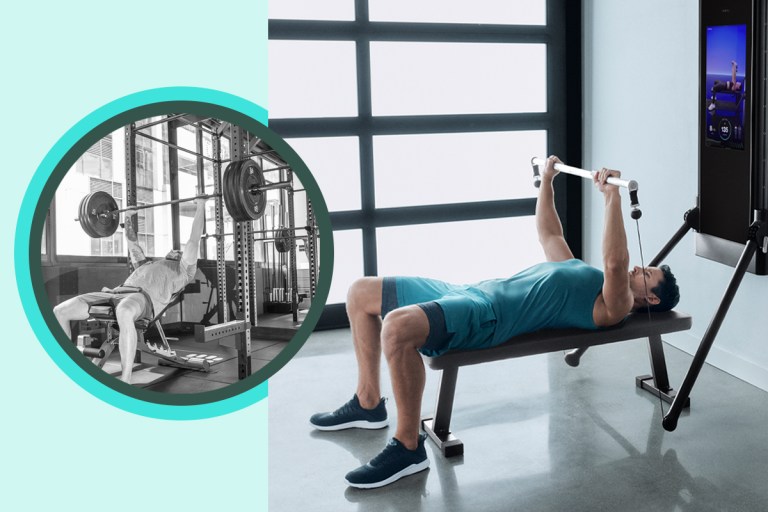Does Yoga Build Muscle?
Spending time on the mat has muscle-building benefits, but may give you the best results when paired with strength training.

Yoga is an exercise practice that has existed for thousands of years, standing the test of time for good reason. It has several fitness benefits for the body and mind, the most obvious of which is probably flexibility. Practicing yoga consistently can also support your cardiovascular system, help protect you against injuries, relieve stress, and improve athletic performance, according to the American Osteopathic Association. But can yoga help build muscle, too?
How Does Yoga Build Muscle?
Yoga is a type of bodyweight training, and working against just your body weight as resistance can be enough of a challenge to stimulate some muscle growth for some people. A 2015 study published in Evidence-Based Complementary and Alternative Medicine found that yoga improved muscular strength after 12 weeks.
One of the ways in which yoga helps build strength is through isometric exercises, in which your muscles contract but don’t change length, explains Tonal movement specialist and certified yoga instructor Shelby Hicks. “When you’re holding those longer poses, you’re improving your ability to contract those muscles and recruit the fibers more fully,” she says. That translates to a stronger, more stable joint.
There’s also a lot of eccentric contraction (which is when the muscles lengthen, as opposed to a concentric contraction when the muscles shorten) in yoga, which has been shown to build more muscle faster. Picture yourself lowering yourself with control into Warrior 3—that’s an eccentric move. Eccentric training was actually found to be better at building both muscle size and strength than concentric training, according to research published in 2014 in the Journal of Applied Physiology.
Imagine you’re in a flowy class where you’d doing multiple Chaturangas, which are essentially eccentrically loaded pushups; pushups, for example, can be as effective as bench-pressing for increasing upper-body strength and muscle density, according to a 2015 study in the Journal of Strength and Conditioning Research.
And one thing people don’t realize, says Hicks, “when you’re stretching, you’re still putting force down the muscle belly and the connective tissue; your body has to respond to that tensile force by strengthening both the muscle and the connective tissue.” So even if you think of yoga as “just stretching,” that kind of small change will still cause positive tissue adaptations.
Can Yoga Replace Lifting Weights?
In order to get stronger, you need to systematically increase the difficulty of your workouts over time—what’s called progressive overload. In resistance training (including bodyweight training), you can do that by gradually ramping up various factors, such as load, training volume, tempo, and time under tension.
Progressive overload can be applied, to a certain extent, to yoga, too, says Hicks. “You can add more flows, increase the duration of the poses, and progress to more challenging variations.” But at a certain point, you’re going to max out the amount of resistance your body weight can produce—and that’s going to limit your progress.
Muscle growth happens when the fibers inside your muscles are broken down due to the stress of exercise; when your body repairs them, it increases muscle mass and size over time. When you first start a new type of exercise, it doesn’t take much resistance to elicit adaptations, but as you get used to that stimulus, your muscles will require more of a challenge.
If you’re looking to increase muscle size, you will eventually have to add resistance (in the form of weights, bands, cables, chains, etc.) to exercise. Interestingly, researchers found that yoga can be just as effective as using light free weights and resistance bands to improve strength, according to a 2015 study published in The Journals of Gerontology: Series A.
But if you’re looking to develop maximum strength, yoga isn’t enough. Case in point: After eight weeks of practicing Hatha yoga three times a week, sedentary women were able to perform an average of six more pushups and 14 more situps compared to those who did no yoga in an older study published in the American Council on Exercise’s journal. That’s impressive for anyone who’s inactive, but if you’ve already got a solid strength foundation, those are marginal gains.
That said, yoga can improve balance, mobility, lower body flexibility, functional movement, according to a 2021 meta-analysis published in the Internal Journal of Environmental Research and Public Health. Pairing yoga sessions with your strength training sessions can help you level up your lifts so you squat deeper and lift heavier without getting injured–all of which will support muscle building.
Can You Get Toned With Just Yoga?
Part of the appeal of yoga for a lot of people—beyond the mindfulness aspects of the practice—is the lean physique it seems to cultivate.
Yoga focuses on lengthening your range of motion, which can create the appearance of lean, toned muscles. “Think of a bodybuilder, with bulgy, short muscles,” says Hicks. “With yoga, you’re building strength but you’re also keeping the muscle belly lengthened.” Bodybuilders often focus on concentric muscle activation, while yoga incorporates more eccentric and isometric activation—the muscle itself gets bigger but also stays long, which creates a less bulky look.
But a leaner look is also associated with gaining muscle while losing body fat, and—even though it’s not always a high-intensity, calorie-burning workout—yoga can lead to weight loss. It’s not just the workout itself, though; instead, yoga may improve the psychological processes (including mindfulness, distress tolerance, and self-compassion) which may be important for long-term weight loss, a 2022 study published in PLOS ONE suggested.
As always, variation in exercise will better help you maximize your workouts. “I think the pairing of yoga with resistance training is the ultimate way to build muscle but also decrease your risk of injury and strengthen your connective tissue,” says Hicks. “Yoga enables you to build better, high-quality muscle.”
Yoga Workouts on Tonal
Balance your strength training routine and enjoy the additional benefits of yoga with these sessions on Tonal.
Power Sculpt Yoga – Coach Jake Ferree
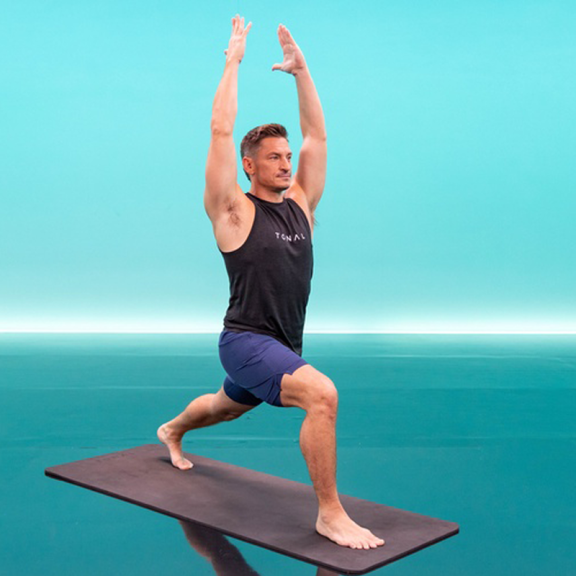
This advanced-level class proves you can challenge your muscles with just your body weight. You’ll feel the heat build and also get in a full-body stretch.
Mind-Body Balance – Coach Jake Ferree
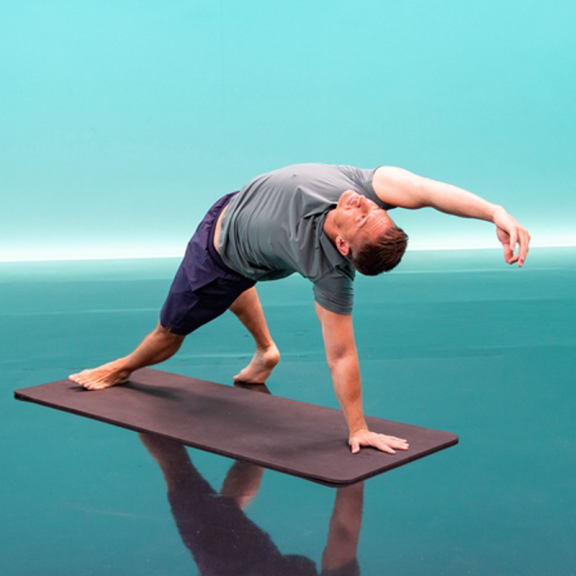
Experience the mental benefits of yoga in this workout which includes balancing postures to help you stay focused and shift your perspective.
Core Power Flow – Coach Jake Ferree

Target your core in this session that’ll light up your abs, obliques, and lower back through plank variations and balancing poses.
